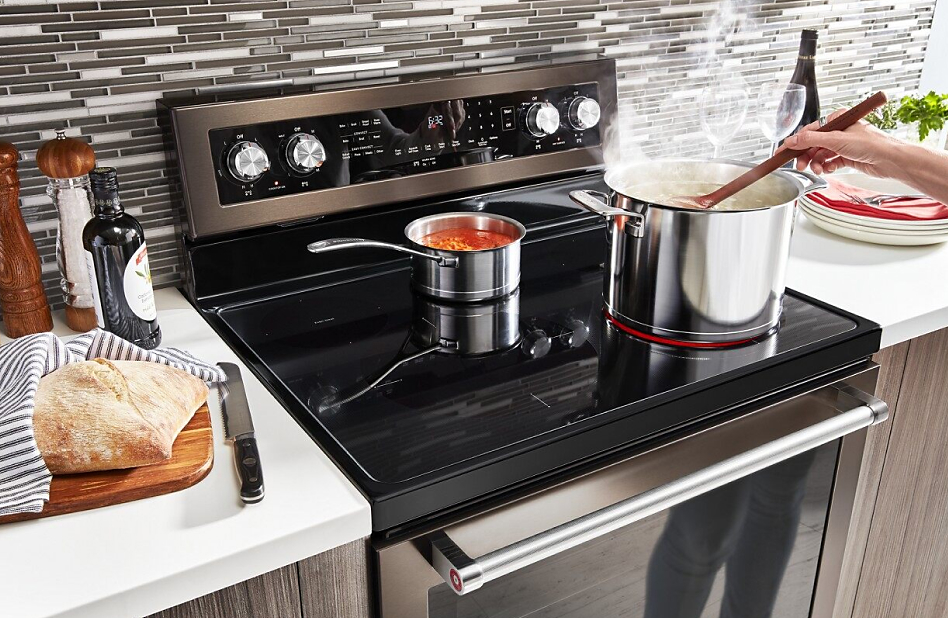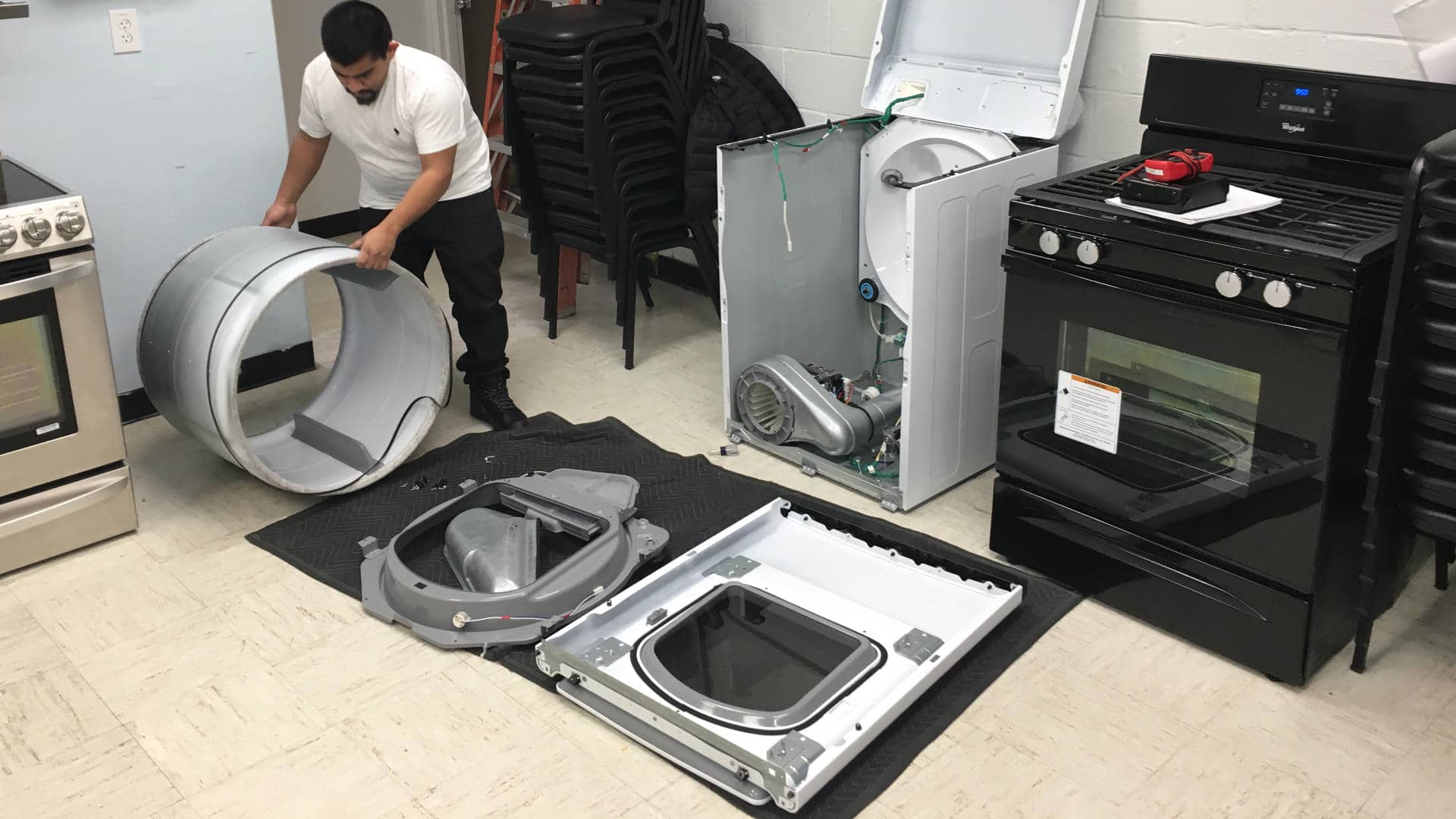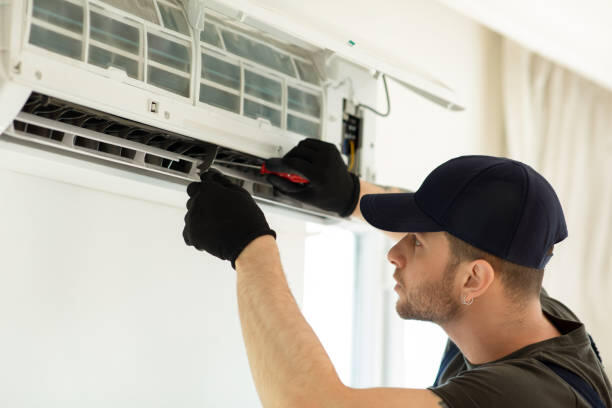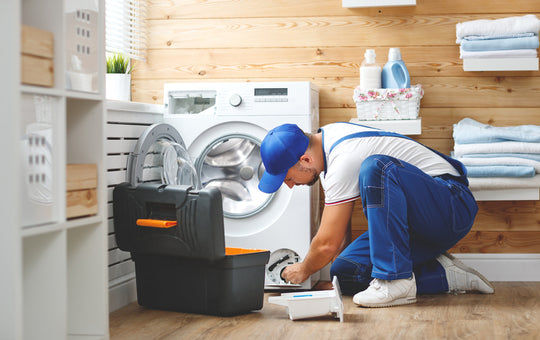Front Load Washer Error Codes in Whirlpool Machines [FULL GUIDE]
Front load washers have become an integral part of modern living, providing efficiency and convenience in our daily routines. However, like any other sophisticated appliance, they can display error codes, signalling potential problems that need attention.
These error codes are not just random numbers and letters but a coded language that communicates specific issues within the machine. Understanding these codes can save time and money, helping you troubleshoot problems before they escalate.
Matt Zieminski, an appliance expert, has been instrumental in fostering a community-driven platform aimed at helping users resolve these appliance issues effectively. This comprehensive guide will walk you through the error codes for two categories of front load washers: those manufactured in 2018 or before, and those made in 2019 or after.
- Front Load Washers (2018 or Before) Error Codes
- Front Load Washers (2019 or After) Error Codes
- Essential Tips for Troubleshooting Front Load Washer Errors
- Resetting Controls and Power Failures
Front Load Washers (2018 or Before) Error Codes
Explanation of error codes 1h to 12h: Delay Wash activation.
These error codes refer to the Delay Wash function, which allows users to postpone the washing cycle. Understanding these codes helps in utilizing this feature or troubleshooting any related issues.
Understanding the dET error: Detergent dispenser cartridge detection.
The dET error occurs when the washer detects an issue with the detergent dispenser cartridge. This could be related to incorrect placement or a malfunction within the cartridge system.
Dealing with "Beeps" error: Addressing issues with the washer door.
If your washer is emitting repetitive beeps and displaying a door error, this signifies a problem with the door mechanism. This could be a simple issue like the door being ajar or a more serious problem with the door lock.
Overview of F# E# or other F codes: System error codes and their significance.
These error codes are usually more complex than the simple ones that indicate a door is open or the detergent dispenser is empty. They can relate to the washer's internal system, such as the control board, motor, or pump.
The meaning of these codes can vary greatly, so it is important to understand them in order to troubleshoot the problem properly. You can usually find a list of error codes and their meanings in your washer's owner's manual.
Detailed troubleshooting for common F codes:
- F20: Water inlet problem.
- F21: Drain problem.
- F22: Front door lock issue.
- F5 E2, F5 E3: Door not locking properly.
- F5 E4: Resolving consecutive washer runs without door opening.
- F7 E1: Motor speed sensing error.
- F8 E1 or LO FL: Incorrect water amount detected.
- F8 E2: Dispenser system problem.
- F9 E1: Addressing longer drain times.
- FH: Water inlet problem.
- Int: Cycle pause or cancel.
- LoC or LC: Activating or deactivating Control Lock.
The error codes in front load washers manufactured in 2018 or before can be intricate. By recognizing these codes and understanding what they signify, you're well on your way to resolving any issues that might arise.
Front Load Washers (2019 or After) Error Codes
2019-or-after
Front load washers produced in 2019 or later come with updated features and functionalities, leading to a new set of error codes. Understanding these codes is essential for maintaining optimal performance and longevity of your appliance.
Explanation of "-" (dashes in the display) error: Troubleshooting unresponsive cycles.
Dashes in the display are indicative of unresponsive cycles. This could be due to a temporary system glitch and usually requires a simple reset.
Understanding the CL Code: Reminders for the Clean Washer cycle.
The CL code serves as a reminder for users to run the Clean Washer cycle. Regularly running this cycle helps keep the washer in prime condition.
Detailed troubleshooting for various F codes:
- F1 E2, F3 E1, F3 E2, F3 E5, F3 E6, F4 E1, F4 E4: These codes indicate that there is a problem with the motor or temperature sensors. The specific issue may vary depending on the code.
- F5 E1, F5 E2, F5 E3: These codes indicate that there is a problem with the door, motor, or dispenser. The specific issue may vary depending on the code.
- F5 E4 or dr: This code indicates that the washer has run multiple cycles without the door being opened. This may be due to a problem with the door latch or the user not opening the door after the cycle has finished.
- F6 E1, F6 E2, F6 E3: These codes indicate that there is a problem with the motor or door. The specific issue may vary depending on the code.
- F7 E2, F7 E8, F7 E9, F7 EA, F7 EC: These codes indicate that there is a problem with the motor or electronic control. The specific issue may vary depending on the code.
- F8 E3: This code indicates that there is a problem with the dispenser system.
- F9 E1: This code indicates that the drain time is longer than usual. This may be due to a problem with the drain pump or the drain hose.
- FC E0: This code indicates that there is a general problem with the washer.
If you are experiencing any of these error codes, it is best to contact a qualified technician for assistance.
This section represents the evolution of front load washers, reflecting changes in technology and design. Understanding these error codes ensures that your washer continues to run smoothly.
Essential Tips for Troubleshooting Front Load Washer Errors
<a name="troubleshooting-tips"></a>
Having a clear understanding of the error codes is just the beginning. Here are some essential tips to help you troubleshoot these errors effectively:
Tips for checking water supply: Ensuring sufficient water for proper operation.
Regularly inspecting the water supply lines can prevent many common errors, such as F20 or FH.
Inspecting drain hose and inlet screens: Identifying and clearing potential obstructions.
Drain and inlet issues, represented by codes like F21, can often be resolved by checking for obstructions and cleaning as needed.
Troubleshooting door lock issues: Ensuring proper closure and locking mechanisms.
Door-related errors such as F22 or F5 E2 can often be solved by inspecting the door's closure and locking mechanisms.
Dealing with detergent cartridge detection: Ensuring the dispenser functions correctly.
The dET error requires careful examination of the detergent dispenser cartridge. This often involves reseating or cleaning the cartridge.
Addressing motor and electronic control-related errors: Essential checks for smooth operation.
Errors such as F7 E2 or F7 E9 may necessitate professional inspection and repair of the motor or electronic control system.
Resolving excessive suds issues: Understanding and tackling Sd or SUD errors.
Excessive suds can lead to errors like Sd or SUD. Using the proper detergent and following the manufacturer's guidelines can mitigate this problem.
These essential tips provide practical, hands-on solutions for the most common issues associated with front load washers. By implementing these strategies, you can extend the life of your appliance and avoid unnecessary repair costs.
Resetting Controls and Power Failures
<a name="resetting-controls"></a>
Resetting controls and handling power failures are integral parts of troubleshooting front load washers. These situations can occur unexpectedly, and knowing how to address them properly is crucial for the safety and functionality of your appliance.
Instructions for resetting controls on front load washers.
Resetting the controls on a front load washer can often solve minor glitches and unresponsive cycles. Here's a simple step-by-step guide:
- Turn Off the Washer: Start by turning off the washer, either by pressing the power button or unplugging it.
- Wait for a Minute: Give the washer some time to fully shut down. Waiting for about a minute usually suffices.
- Turn It Back On: Plug the washer back in or press the power button to turn it on. In many cases, this will clear the error and allow you to continue washing.
- Check the Error Codes: If any error codes persist, refer to the specific sections above for targeted troubleshooting.
Keep in mind that these reset instructions can vary between models, so always consult your owner's manual for specific guidance.
Handling power failures during operation: Safety measures and restarting procedures.
Power failures can be both inconvenient and potentially damaging to your front load washer. Here's how to handle them:
- Unplug the Washer: If possible, unplug the washer to protect it from power surges when electricity is restored.
- Wait for Power Restoration: Be patient and wait for the power to return. Avoid trying to manually intervene with the washing cycle.
- Check for Errors or Damage: Once the power is restored, check for any error codes or visible damage.
- Resume or Restart the Cycle: Depending on your washer's features, you may be able to resume the washing cycle or need to restart it completely.
- Consult Professional Assistance if Needed: If you encounter any issues or persistent error codes, it may be wise to consult professional assistance to ensure the washer is operating safely.
Conclusion
Understanding the error codes and troubleshooting procedures for front load washers is more than just a convenience; it's a necessity for maintaining an efficient and long-lasting appliance. From simple control resets to handling unexpected power failures, this comprehensive guide has provided you with the tools and insights needed to tackle these challenges head-on.
If you ever feel like it has become to much to manage by yourself, just give us a call at +1 (346) 517-7828 and schedule an audit.
![Front Load Washer Error Codes in Whirlpool Machines [FULL GUIDE] Front Load Washer Error Codes in Whirlpool Machines [FULL GUIDE]](/media/images/whirlpool_front_loading_washing_machines_error_codes_1.png)





